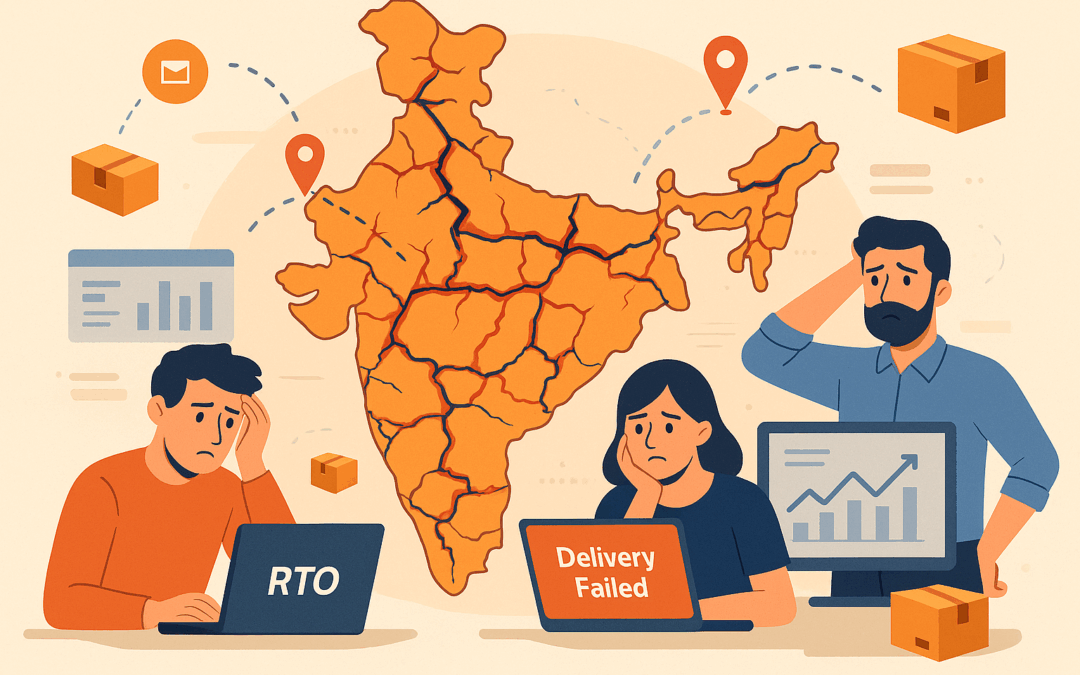There was a time when Shiprocket was every D2C brand’s go-to logistics partner.
But over the past year, that story has changed. What was once the great equaliser for eCommerce brands has slowly become a growing source of frustration. Social media is now filled with stories of undelivered orders, fake delivery attempts, and missing returns. The recent Zareen Khan vs Shiprocket dispute was just the headline version of a problem many smaller sellers have been quietly facing for months.
Contents
- 1 Common Shiprocket Delivery Complaints D2C Sellers Keep Reporting
- 2 What D2C Brands Expect From Delivery Partners in 2025
- 3 The Ultimate Checklist for Picking a Reliable Logistics Partner
- 4 4 Best Shiprocket Alternatives for D2C Brands in 2025
- 5 How D2C Brands Can Safely Move Away From Shiprocket
- 6 Conclusion
Common Shiprocket Delivery Complaints D2C Sellers Keep Reporting
Talk to any small eCommerce seller today, and you’ll hear a familiar story:
“Shiprocket’s dashboard shows ‘delivered,’ but my customer never got the parcel.”
Fake delivery attempts have become one of the most common Shiprocket complaints among users. And the problem doesn’t stop there. The same lack of accountability shows up when it comes to returns. Sellers often report that the “returned product” never actually makes it back to the warehouse.
As one user put it on Reddit:
“Worst service ever, They try to do fake delivery attempt, where they dont even contact the buyer and put some vague reason for it and mark the product RTO.”
This pattern of shiprocket complaints continues with Auto RTOs, where orders are marked for return without even a confirmation call to the buyer. Sellers often discover an order has been returned only after the status changes in the dashboard, with no explanation or buyer interaction.
These aren’t small glitches. They’re signs of a system breaking under its own weight. When deliveries fail and support falls silent, sellers lose more than parcels – they lose customer trust.
What D2C Brands Expect From Delivery Partners in 2025
For most D2C brands today, fast delivery is the baseline. What they really want now is control. Control over visibility and customer experience.
This starts with:
- Transparency: Accurate status updates and complete traceability from dispatch to doorstep. If something goes wrong, brands want to see it and fix it before their customer even complain.
- Flexibility: Multi-carrier routing is no longer a luxury; it’s a survival tool. The ability to automatically reroute through the best-performing courier for each pin code keeps deliveries moving and customers happy.
- Customer-first delivery experience: Seamless rescheduling, proactive communication, and clear retry options – these small touches turn a failed attempt into a retained customer.
- Reliable return and refund flow: Returns are now part of the brand experience, not an afterthought. Customers expect transparency in every reverse pickup and refund timeline.
Great products bring customers in, but great delivery keeps them. D2C brands that treat logistics as a trust-building experience (not just a process) will create the kind of loyalty competitors can’t replicate.
The Ultimate Checklist for Picking a Reliable Logistics Partner
Choosing a delivery partner represents your brand at your customer’s doorstep. The right partner doesn’t just deliver packages; they deliver trust.
Here’s a checklist every brand should run before locking in a logistics partner:
- Pin Code Coverage: Ensure the network covers your priority zones – both metro and Tier-2/3 cities. After all, reach means nothing if your best-selling regions aren’t served efficiently.
- On-Time Delivery Rate: Anything below 90% is a red flag. Reliable partners track this daily and share reports transparently.
- NDR & RTO Management: Evaluate how they handle non-delivery reports and returns. Are buyers contacted proactively, or are orders just marked RTO without effort?
- Returns Handling: Reverse logistics should be traceable with image-based proof and timestamps – not a black box.
- API / Tech Integration: Look for partners offering live webhook updates, POD images, and detailed event logs that sync with your CRM or OMS.
- Customer Support & SLA Terms: Clear escalation paths, realistic response windows, and a defined resolution SLA separate serious players from amateurs.
Great delivery partners don’t just say they’re reliable – they show it. So before you commit, run the data, track the metrics, and let performance decide for you.
4 Best Shiprocket Alternatives for D2C Brands in 2025
Some content here which will lead to the below points:
1. ClickPost
If your biggest pain point is not knowing what’s really happening once an order leaves your warehouse, ClickPost fixes that. The platform offers real-time tracking, delivery-stage analytics, and predictive delay alerts, so your ops team can act before a problem hits the customer. Its smart routing engine chooses the best courier for each pin code based on historical success rates – not just cost – which directly helps reduce RTOs. Many mid-size D2C brands use ClickPost to consolidate data across multiple carriers while keeping a single source of truth for logistics performance.
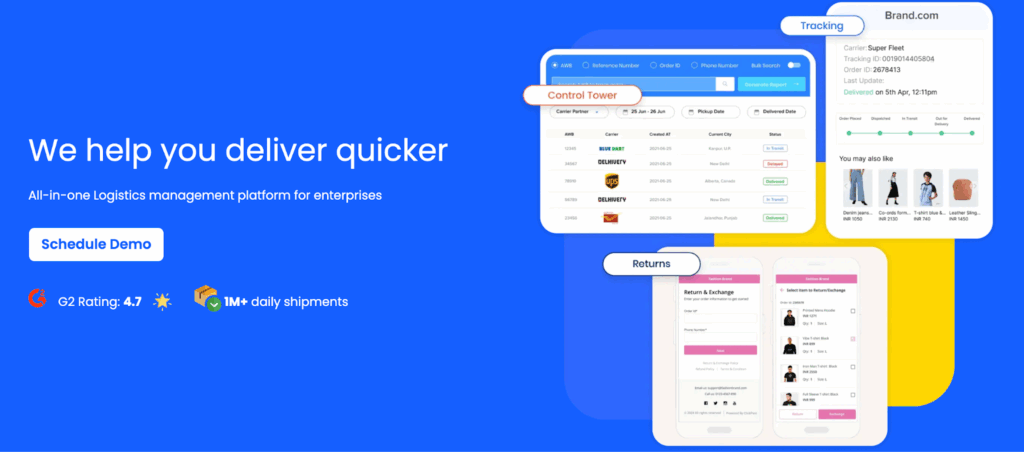
Best for: Brands handling high volumes that need clarity and proactive delivery management.
2. eShipz
eShipz works like a shipping OS for fast-growing D2C operations. You can connect multiple storefronts, automate label generation, and push tracking updates to customers without manual intervention. Its biggest edge? Rule-based automation. You can set conditions like “route prepaid orders through Blue Dart, COD through XpressBees” or “auto-retry failed deliveries within 24 hours.” That flexibility saves ops time and reduces manual errors – a big win for brands scaling quickly.
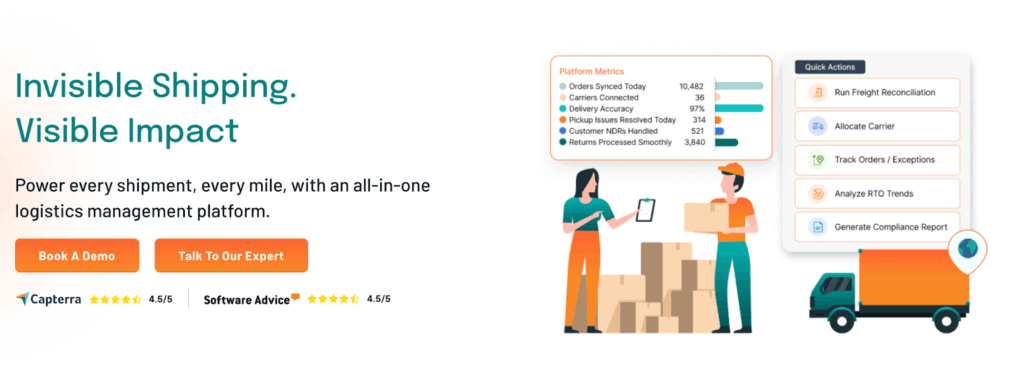
Best for: Growing D2C brands looking to streamline shipping workflows and reduce human dependency.
3. Shipway
Shipway goes beyond shipping. It’s built to enhance the post-purchase experience – branded tracking pages, automated status notifications, and simplified return workflows.
The highlight here is NDR and returns automation. Instead of losing visibility once a parcel is marked for return, Shipway helps you track reverse pickups, verify returned items, and even generate branded updates for customers. It’s the kind of polish that directly reduces “Where’s my order?” tickets.
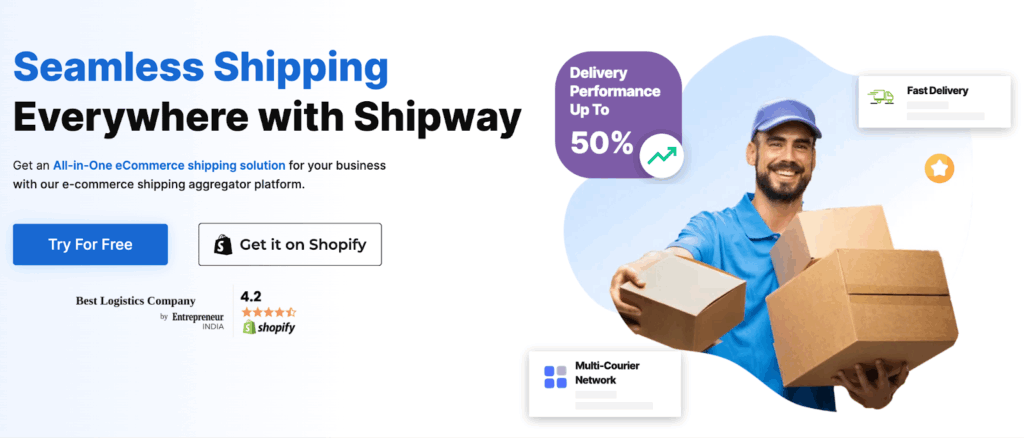
Best for: Lifestyle and fashion brands with high return volumes and a focus on customer retention.
4. NimbusPost
NimbusPost operates as a tech-first logistics partner rather than just an aggregator. It connects to major courier networks like Delhivery, XpressBees, and Ecom Express while offering strong coverage across metros and Tier-2/3 cities.
Where it stands out is in automation plus accountability. The dashboard gives a clear view of order flow, NDR management, and pickup performance – something smaller aggregators often overlook. Their support responsiveness has also earned them a better reputation among mid-scale sellers compared to legacy players.
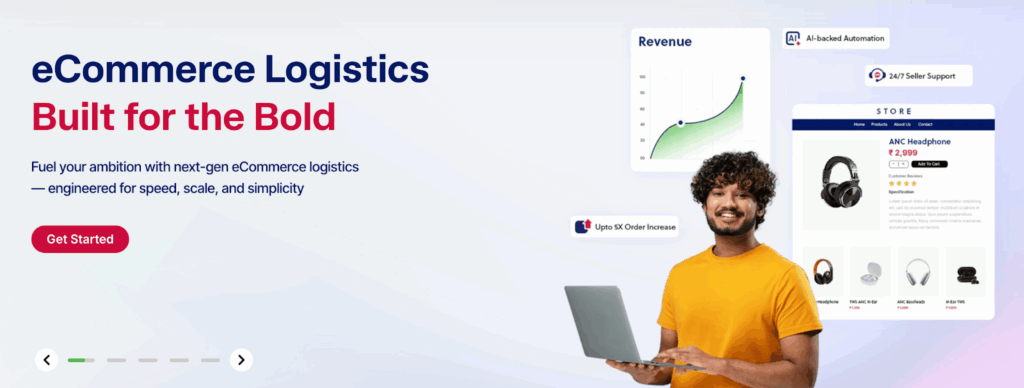
Best for: D2C brands shipping nationwide that need a balance between scale, tech, and reliability.
These four aren’t just names on a list – they’re platforms built around what D2C brands actually need in 2025: transparency, automation, and accountability. The right choice depends on your growth stage and how much control you want over every shipment.
How D2C Brands Can Safely Move Away From Shiprocket
Switching logistics partners can feel risky – but staying with an unreliable one is riskier. The smart way to do it? Test, measure, then scale. Here’s how to run that transition without disrupting your operations:
- Audit the last 3 months of deliveries: Pull your shipment data and calculate your true RTO cost – not just in logistics fees, but in lost revenue, refunds, and customer churn. This baseline tells you what “bad delivery” is really costing your business.
- Pick one alternative partner and run a pilot: Onboard a new provider and route 10–20% of your order volume through them for at least two weeks. Keep your existing partner running in parallel – this A/B test gives you live, comparable data.
- Track the right KPIs: Don’t just look at speed – look at on-time rate, fake NDRs, customer complaints, and POD image presence. These reveal which partner actually delivers quality, not just quantity.
- Compare, analyse, and decide: After your pilot, line up the numbers and customer feedback side by side. The partner with fewer complaints, clearer PODs, and lower RTO rates is your winner – even if their rate card is slightly higher.
You don’t need long reports or promises to pick the right partner – just results. Test small, track smart, and stay with the one that proves it can keep up.
Conclusion
Shiprocket’s complaints story says a lot about where D2C logistics stands today. What started as a plug-and-play convenience has now become a lesson in what really matters: reliability, control, and accountability.
The good news? That level of consistency is finally possible. Platforms like ClickPost, eShipz, Shipway, and NimbusPost are proving that logistics can be both transparent and dependable if you choose partners who back their promises with performance. Because in eCommerce, great delivery isn’t about speed; it’s about trust. And trust, once earned, compounds with every order.
Once your logistics are sorted, the next step is building the kind of brand that keeps customers coming back. At BrandShark, a digital marketing agency in Bangalore, also with services in Mumbai, we help D2C brands turn that reliability into growth through data-backed marketing and sharper storytelling.

